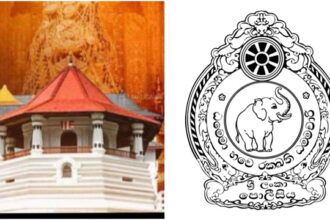Over the last 24 hours, Israel has unleashed a series of air strikes across Lebanon.
Hundreds of Lebanese people are dead, many are wounded and thousands are displaced as they scramble to try to figure out safe areas to get their families to.
Calling this part of its “new phase” of the war on Gaza, the Israeli army said it struck more than 1,000 targets in Lebanon – claiming they were Hezbollah strongholds or military facilities placed in people’s homes.
What happened and when?
Israel has just killed at least 558 Lebanese people.
Among the dead are 50 children and 94 women, while about 2,000 people were wounded, the Lebanese Ministry of Public Health said.
More than 10,000 people have been forced from their homes in the most ferocious onslaught Lebanon has experienced since its civil war of 1975-1990.
The first Israeli strikes on Lebanon were reported on Monday at 6:30am, hitting an uninhabited area near Byblos, north of Beirut.
More than 1,300 strikes on what Israel claimed were Hezbollah military targets followed. The attacks are ongoing.
Where in Lebanon is Israel attacking?
Satellite mapping of the strikes by Al Jazeera shows attacks across Lebanon, with the highest concentration in the south and the Bekaa Valley, where Hezbollah’s influence is considered strongest.
Before the attacks, some 80,000 phone calls from the Israeli army to Lebanese people – predominantly in the south – were reported, urging them to evacuate their homes and find “safety”.
The result was panic, chaos and bottlenecks, with the main coastal road to the capital, Beirut, gridlocked for several kilometres as residents tried to flee an impending attack.
Why is Israel attacking Lebanon?
Israel says it is attacking Hezbollah so it can return its displaced citizens to the north.
On Wednesday, Israeli Defence Minister Yoav Gallant announced the redeployment of “forces, resources and energy” towards the north and Hezbollah as the war entered a “new phase”, seeming to imply the war on Gaza was winding down.
According to Gallant, this was part of a bid to return the 65,000 Israelis he had ordered evacuated in the early days of the conflict in anticipation of Hezbollah attacks on their homes near Lebanon’s border.
That big Hezbollah attack never happened but Israel and Hezbollah have been maintaining a steady exchange of fire over Lebanon’s southern border since October 2023.
Hezbollah has promised to keep up its attacks until Israel reaches a ceasefire agreement with the group’s ally Hamas in Gaza.
In a news conference on Monday night, Israel’s military spokesperson did not rule out a land invasion of Lebanon, saying: “We will do whatever is necessary to bring back home all our citizens to the northern border safely.”
Is this related to last week’s pager attacks?
It appears so.
On September 17, a day before Gallant’s “new phase” announcement, hundreds of pagers belonging to Hezbollah members were detonated in an attack widely believed to have been undertaken by Israel.
Israel did not comment.
The following day, another attack hit Hezbollah’s walkie-talkie radios. The two attacks killed 37 people, including two children, and wounded and maimed thousands more.
The attacks compromised the group’s communications and, according to analysts, undermined its morale.
Exchanges between Israel and Hezbollah have escalated since, with a devastating Israeli strike in southern Beirut on Saturday killing 45 people and wounding many more. (Al Jazeera)
The post 50 children, 94 women among 558 killed by Israeli airstrikes in Lebanon appeared first on Newswire.




